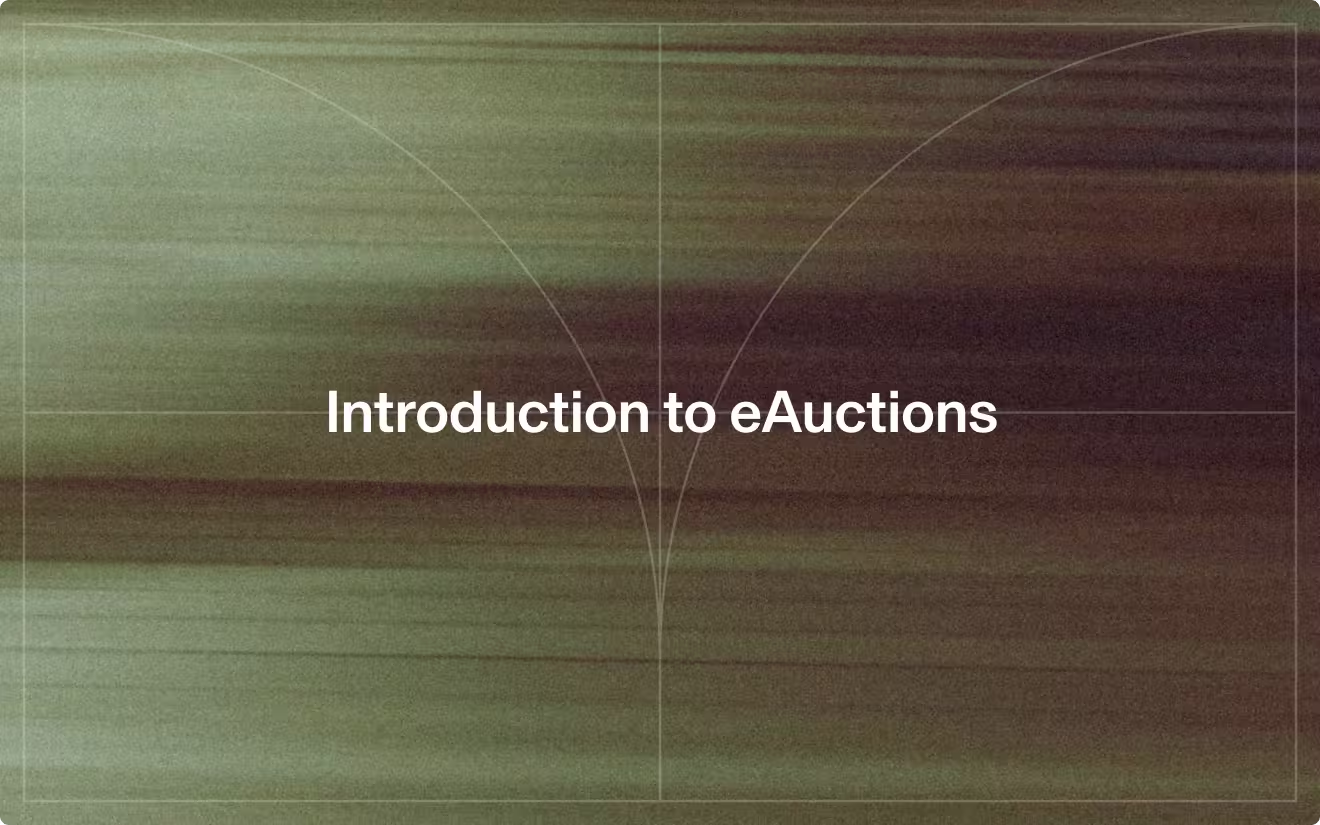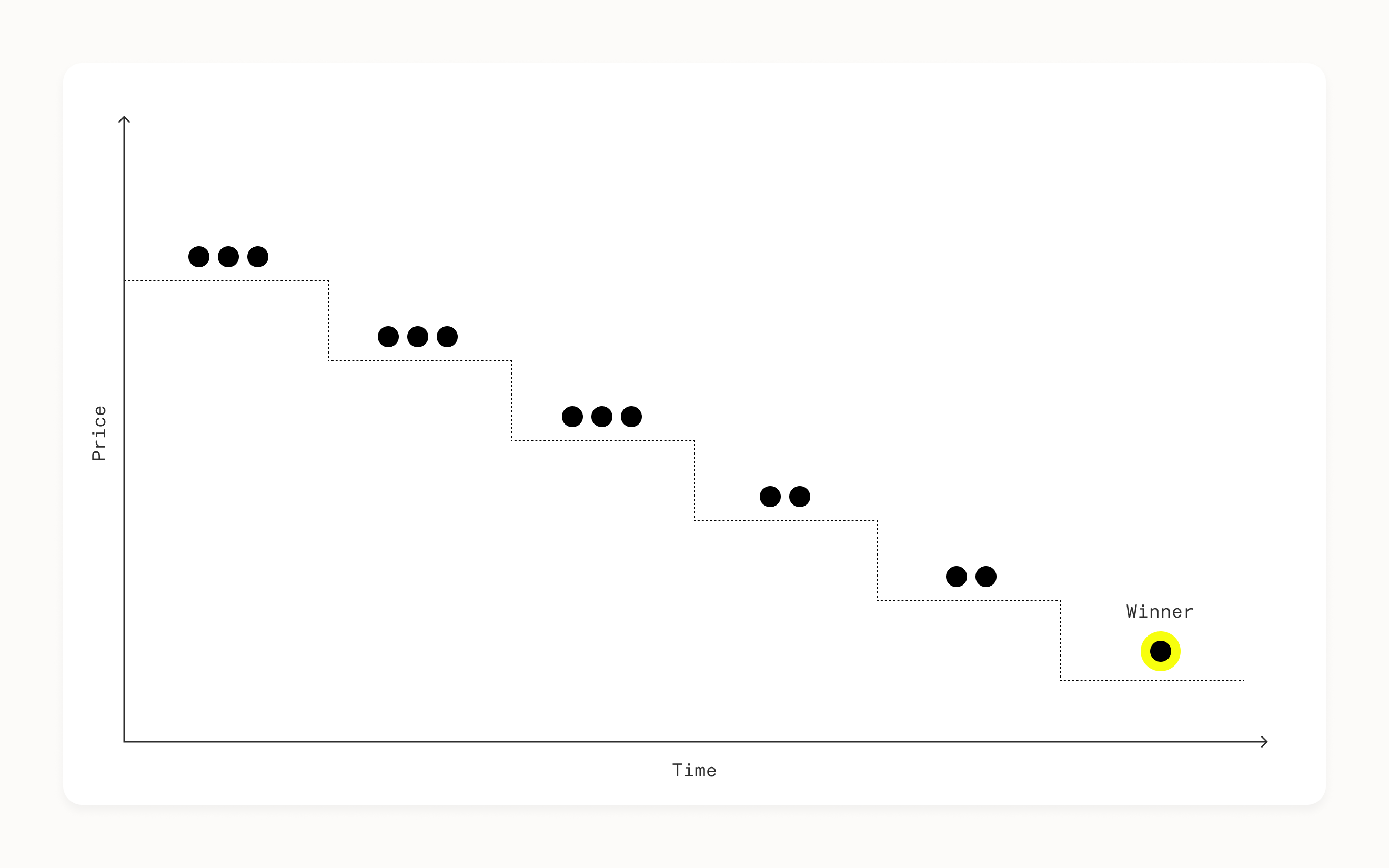Introduction to eAuctions: How to choose the right type for your sourcing event

Introduction to eAuctions: How to choose the right type for your sourcing event
eAuctions have become a core element of strategic sourcing. They help procurement teams increase transparency, foster competition, and achieve better pricing outcomes in less time. But not every auction format fits every situation. Choosing the right one can be the difference between success and frustration.
This article explains how eAuctions work, when to use them, and how Archlet supports English, Dutch, and Japanese Auctions - each tailored for specific market conditions and feedback preferences.
What is an eAuction?
An eAuction is a live, online negotiation where suppliers compete to win business by submitting improved bids within a defined time window. Buyers set the rules, suppliers respond in real time, and the result is a transparent, data-driven outcome.
Common goals include:
- Increasing competitive tension
- Compressing price gaps between suppliers
- Reducing negotiation cycles
- Enabling transparent and auditable decisions
The main eAuction types in Archlet
English Reverse Auction
Suppliers continuously decrease their prices until the deadline, based on feedback about their current ranking or distance to the leading bid.

Best for:
- Markets with at least three qualified suppliers
- Competitive categories with close price levels
- Teams seeking transparent and dynamic bidding
Strengths:
- Quickly closes price gaps through active competition
- Easy to understand and communicate
Key Archlet features:
- Exact rank feedback: The most common option
- Traffic light feedback: Shows status based on rank or target price
- Exact rank with leading price value: Displays both position and top bid. You can also mark bids as deleted if a supplier accidentally submits an unrealistically low offer that could distort the auction results.
Dutch Reverse Auction
The auction starts at a low price that increases in intervals until the first supplier accepts the offer. This format rewards fast, decisive action.

Best for:
- Markets with few suppliers
- Large price gaps between offers
- Teams ready to commit to the outcome
Strengths:
- Forces quick decision-making
- Ideal when one or two suppliers dominate the market
Key Archlet features:
- Bonus & malus settings: Fixed or percentage-based adjustments to include qualitative factors such as sustainability or switching costs. This ensures fair competition and supports stakeholder buy-in.
- Sealed bid step: If two suppliers accept the same price, they can submit a final improved offer instead of letting timing decide the winner. This reduces stress for suppliers and avoids disputes.
Japanese Reverse Auction
The auction starts at a high price and decreases step by step until only one supplier continues to accept the new price level.

Best for:
- Markets with limited competition
- Scenarios where price confidentiality is needed
- Events with one or two serious contenders
Strengths:
- Maintains fairness even with few bidders
- Protects sensitive pricing information
Key Archlet features:
- Options to manage supplier reconnection issues, ensuring continuity if someone misses a round due to technical problems.
- Japanese forward mode: Used for sales or discount negotiations where price increases are applied instead of decreases.

How to choose the right auction type
Selecting the right auction type depends on your market characteristics and awarding strategy.
Market factors:
- Spend size and volume
- Number of qualified suppliers
- Competition intensity
- Supplier coverage
Awarding factors:
- Decision drivers (price and non-price)
- Item-level vs. grouped awarding
- Willingness to commit to results
- Single vs. multiple supplier awards
Practical examples:
- If the top two offers are far apart, an English Reverse Auction with ranking feedback is unlikely to trigger movement.
- Avoid a Dutch Reverse Auction unless you are ready to award the winner immediately.
- If your organization lacks buyer attractiveness, an auction may not generate the desired participation or competitive behavior.
Archlet simplifies this decision. Built-in templates and AI-powered setup suggestions guide you to the most effective auction format for your sourcing objectives and supplier landscape.
The bottom line
eAuctions are not about driving prices down at all costs. They create structured, transparent, and fair negotiations that save time and generate measurable value for both buyers and suppliers.
With Archlet, procurement teams can design, run, and analyze auctions in minutes, combining simplicity for buyers with advanced configuration for experts. Whether your goal is to boost transparency, strengthen supplier trust, or achieve savings, Archlet makes it easy.


